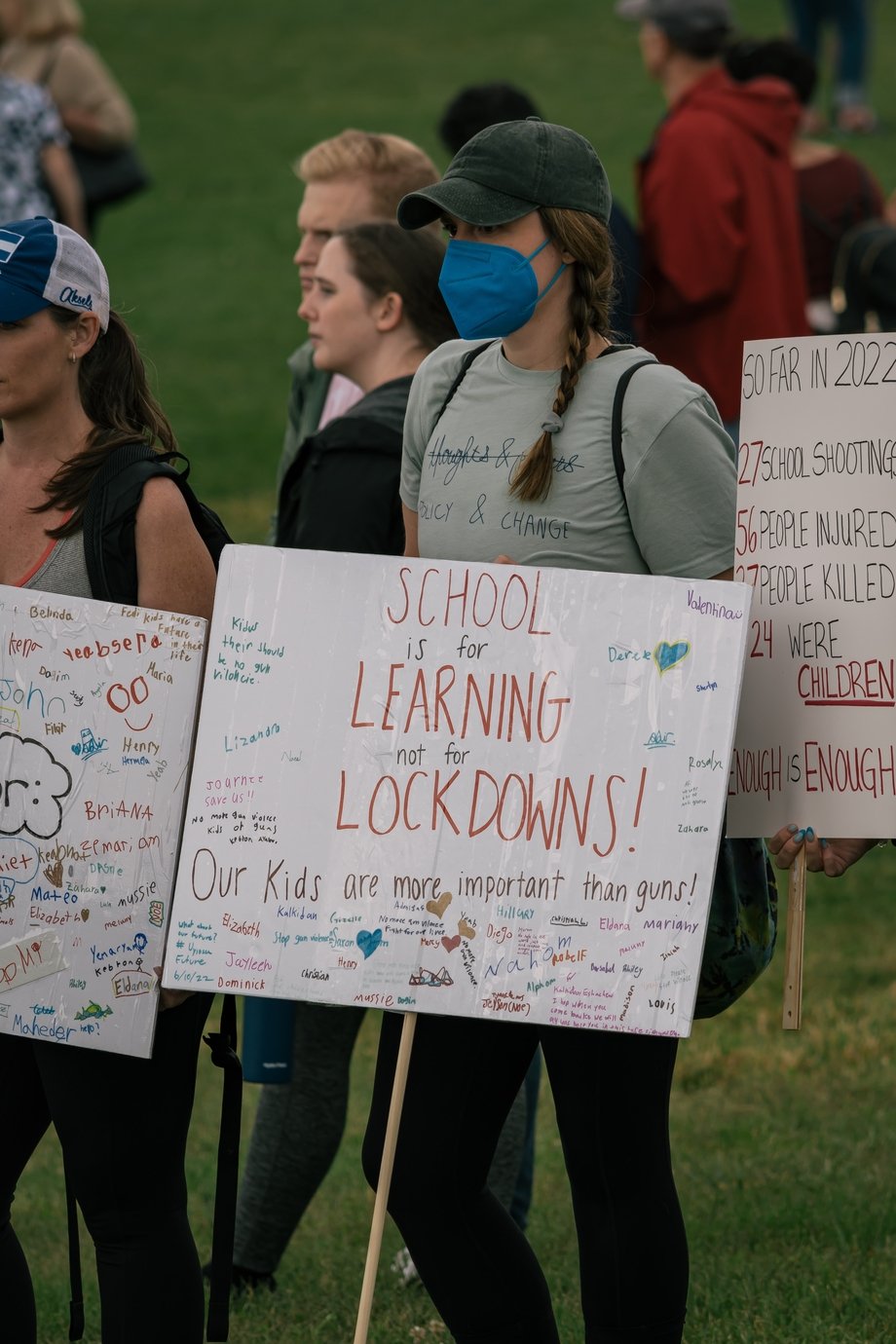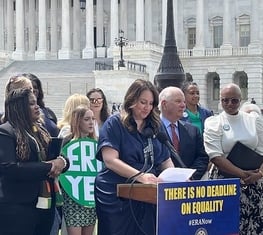Assault Weapons: What is Their Legality and Impact?
Assault weapons are firearms that can fire more and deadlier rounds over a shorter period than a handgun. Research suggests that banning assault weapons can prevent mass shooting injuries and deaths. While some states have their own assault weapons bans, federal legislation is needed to address this issue nationwide.
Assault Weapons and Large-capacity Magazines
A semiautomatic weapon is a firearm that, with each pull of the trigger, fires one bullet and automatically loads another, allowing it to fire quickly. It fires bullets with more energy than a handgun, resulting in more damage to the human body.
A magazine is a device that feeds ammunition into a firearm, and a “large-” or “high-capacity magazine” typically refers to one that holds more than 10 or 15 rounds of ammunition, allowing a shooter to fire many bullets before needing to reload.
Get involved in issues like gun control in your community by joining your local League.
The definition of an “assault weapon” varies under federal and state laws but generally refers to a semiautomatic weapon, sometimes with one or two specific military-style features. Compared to a handgun, an assault weapon with a fixed or detachable large-capacity magazine can fire more and deadlier rounds over a short period.
A Bipartisan Ban and its Limitations
In 1993, the US Senate passed an omnibus crime bill with a near unanimous vote of 95-4. It included the subsection of the Public Safety and Recreational Firearms Use Protection Act, commonly known as the “Federal Assault Weapons Ban.” The ban prohibited the manufacture, transfer, or possession of “certain semiautomatic assault weapons.” It also banned the transfer or possession of large-capacity magazines that held more than 10 rounds.
In 1994, a bipartisan group of former presidents — Gerald Ford (R), Jimmy Carter (D), and Ronald Reagan (R) — sent a letter to House members urging them to pass the omnibus bill, which they did later that year. It went into law as the Violent Crime Control and Law Enforcement Act of 1994.

The 1994 Federal Assault Weapons Ban had several limitations:
- It did not apply to all assault weapons but banned 19 specified semiautomatic weapons, along with copies and duplicates of them;
- It also banned all semiautomatic weapons with at least two specified military-style features, which enabled manufacturers to make minor modifications to the firearms they were producing to exempt them from the ban;
- Additionally, the ban only applied to weapons and magazines manufactured after the bill went into law, so manufacturers boosted production of assault weapons in the months leading up to it.
The ban also had a sunset provision specifying that it would expire in 10 years unless Congress reauthorized it. In 2004, the US House of Representatives introduced a bill to extend the ban for another decade, but it did not go to a vote. On September 13, 2004, the ban expired, and assault weapons and large-capacity magazines became legalized unless prohibited by state or local laws.
State Bans
As of 2023, 10 states (CA, CT, DE, HI, IL, MA, MD, NJ, NY, and WA) and the District of Columbia have laws banning the manufacture, sale, and transfer of assault weapons. Some additionally prohibit their possession. Fourteen states and DC ban large-capacity magazines. This piecemeal legislative landscape has been insufficient to address the dangers of assault weapons across the country.
Why a Federal Ban Matters
In mass shootings, the number of people shot is six times higher when an assault weapon is involved and five times higher when a large-capacity magazine is involved. In an analysis, assault weapons accounted for more than 85% of deaths in mass shootings.
Stay Updated
Keep up with the League. Receive emails to your inbox!
While it is hard to measure the full impact of the 1994 Federal Assault Weapons Ban, banning assault weapons can prevent mass shooting injuries and deaths. When the federal ban was in effect, mass shooting fatalities were 70% less likely compared to before and after the ban. This type of regulation has popular support nationwide, as 67% of Americans support banning assault weapons and high-capacity magazines.
Recent Legislative Action
In the 117th Congress in 2022, the US House of Representatives passed, with bipartisan support, an assault weapons ban to renew and strengthen the previous ban. The Senate, however, did not move it.
In the current 118th Congress, both chambers have legislation (S. 25/H.R. 698) that would ban the importation, manufacture, transfer, sale, or possession of a semiautomatic weapon or large-capacity ammunition feeding device, except those lawfully possessed before the ban is enacted.

The League of Women Voters of the United States believes that the proliferation of semiautomatic weapons in the US is a major health and safety threat to its citizens and supports strong federal measures to limit the accessibility and regulate the ownership of these weapons by private citizens. The League advocated including the assault weapons ban in the Omnibus Crime Bill in 1994 and its extension in 2004. In 2022, LWVUS submitted testimony to the Senate Judiciary Committee on gun safety reform, including banning assault weapons and placing limits on the size of ammunition-feeding devices.
What You Can Do
- Follow the League of Women Voters’ materials and advocacy work on gun safety reform;
- Join your local League to learn about and support local and state initiatives to ban or restrict assault weapons and large-capacity magazines in your community; and
- Learn more about gun violence and policy from expert organizations including:
The Latest from the League
PORTLAND, WASHINGTON – The League of Women Voters of Maine and the League of Women Voters of the United States issued this statement following the acts of violence and active shooter situation in Lewiston.
The League of Women Voters of the United States submitted comments to the Bureau of Alcohol, Tobacco, Firearms and Explosives (ATF) regarding its proposed rulemaking on the definition of when a person is considered "engaged in the business" as a dealer in firearms.
On June 23, the Supreme Court of the United States handed down its decision in New York State Rifle and Pistol Association v. Bruen, overturning a New York gun safety law. The Court ruled that New York’s law requiring a license to carry concealed weapons in public places is unconstitutional.
Sign Up For Email
Keep up with the League. Receive emails to your inbox!
Donate to support our work
to empower voters and defend democracy.






